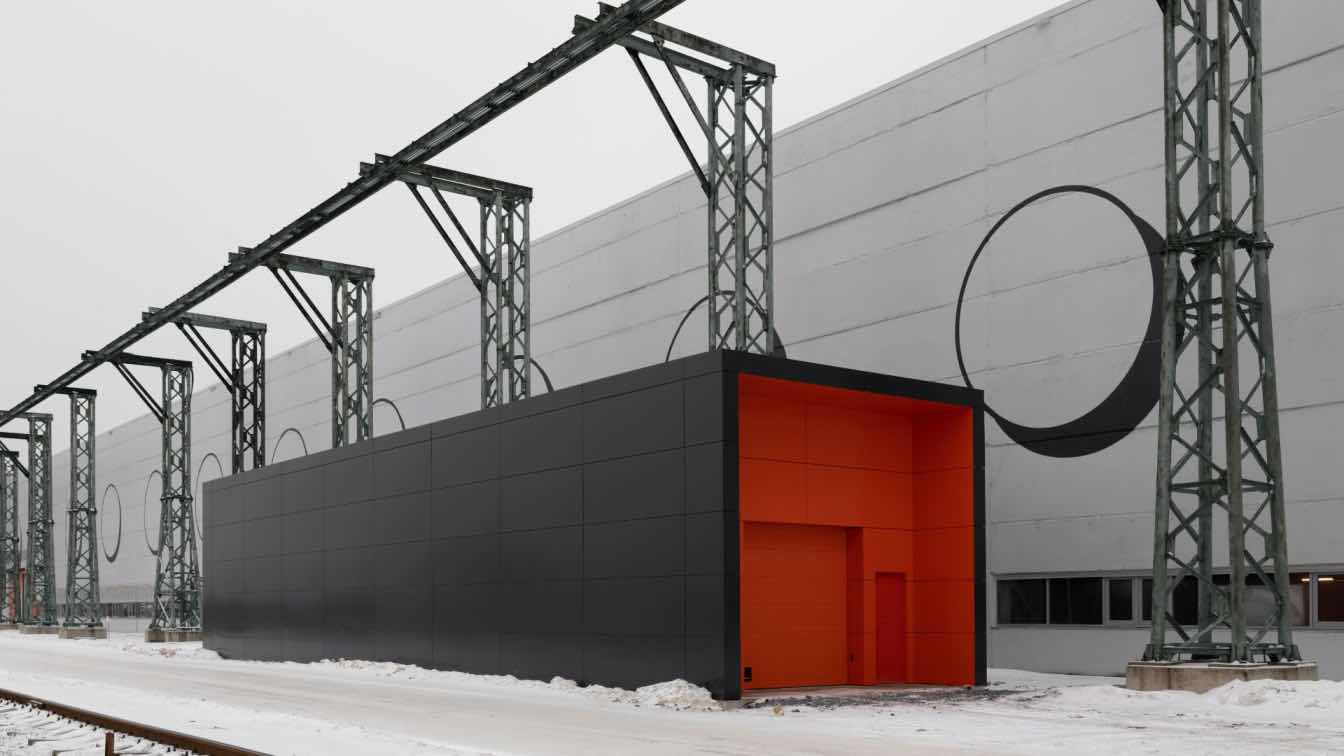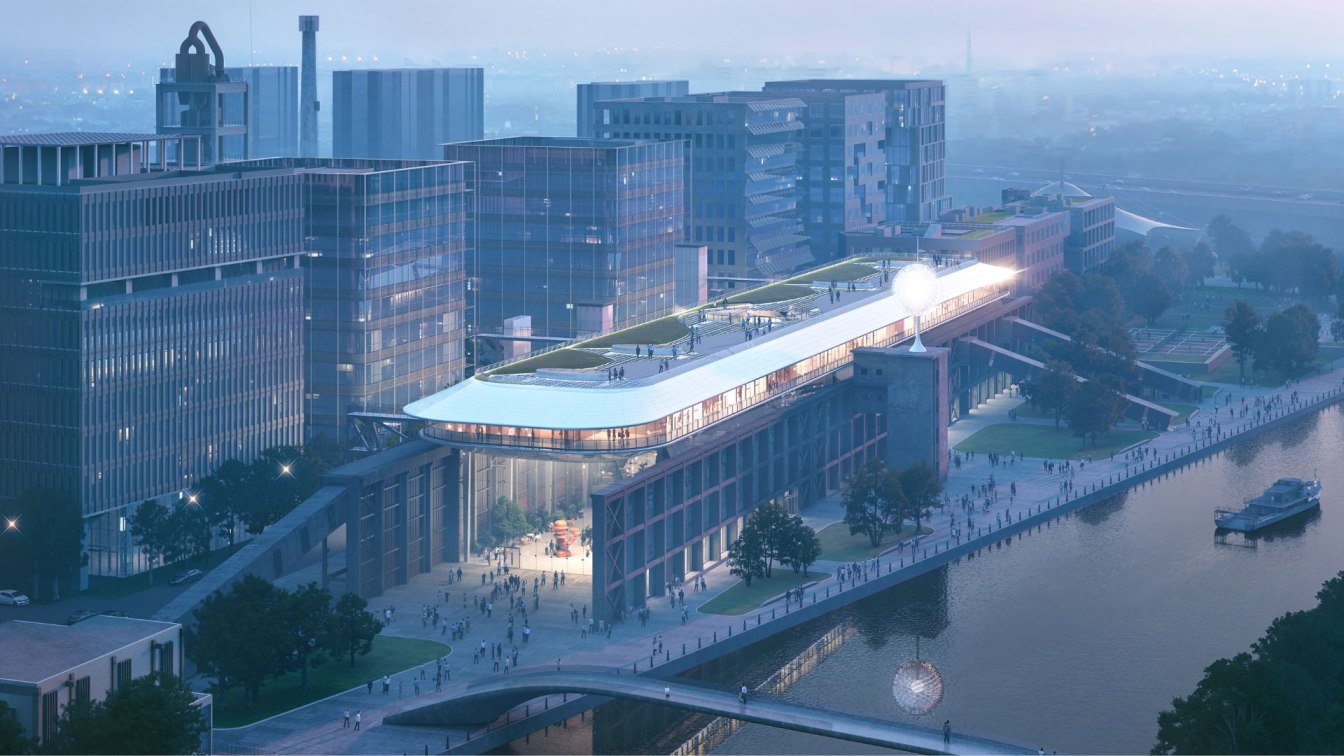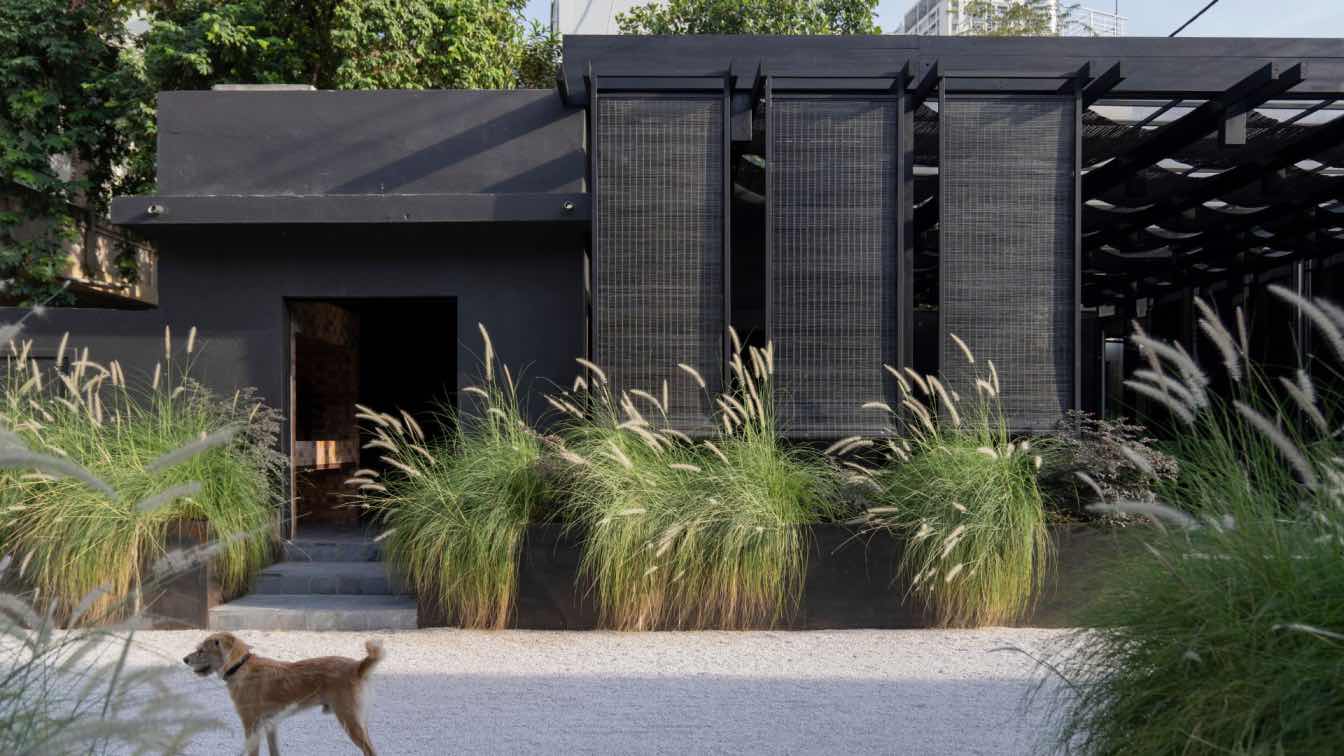Morphogenesis: The Lodsi community project for Forest Essentials is nestled in the Himalayan foothills, along the banks of the river Ganges, in Rishikesh, India. The design brief stipulated by the client outlined the construction of a manufacturing facility for a modern skincare company that focuses on reviving the ancient science of Ayurveda. The brand’s philosophy of infusing ancient wisdom with contemporary aesthetics presented the design team with an opportunity to adapt vernacular construction techniques to create a contemporary production facility.
The design approach and development of the facility was highly specific to the site's topography, climate, and immediate context. It has been designed in a manner that does not exceed the footprint of the previously existing structure. Furthermore, the location of the site and the limited availability of resources determined the budgetary and building constraints for the project. Therefore, the firm set out to achieve a net-zero and energy-efficient building through an integrated design approach resulting in a free-running and off-grid production unit.
The built form draws inspiration from the traditional Garwahli ‘kholi’ (house). A rectilinear volume-oriented along the East-West axis has been planned with a central entry that divides the facility into two parts. Functions that require a cooler environment (herb grinding, packaging, and storage) are located on the upper floor, whereas the preparatory functions with high internal heat gain are located on the lower floor. The North-South oriented butterfly roof form allows large openable windows that allow the prevailing North-East and South-East winds for ventilation, with 80% naturally day-lit spaces and unobstructed views of the valley. The high-volume of space with operable clerestory windows enforces Bernoulli’s principle and moderates indoor temperatures. A central light-well forms a multi-purpose communal space. This also doubles up as mother and child wellness camps and for students post-school.

Passive design strategies and indigenous construction techniques resulted in a strong architectural expression that contextually blends in and builds community pride. Façade shading, window-to-wall ratio and building materials were optimised to ensure a high-thermal mass façade resulting in an energy-efficient building envelope with an EPI of 38kWh/m2/year. A solar roof generating 55kWp offsets the facility’s requirements and creates a surplus to supply back to the grid, hence rendering the design ‘Energy+’. A site-specific rainwater collection, storage tank and treatment system, and an effluent treatment plant offset the water requirements. Waste materials at the site have been repurposed and used, e.g., reclaimed wooden rafters as light fixtures, waste purlin sections as tube light holders, stone chisels as door handles, re-bar as wash basin pedestals, and others. Any organic by-product is reused or composted. This project is net-zero on energy, water, and waste. The planning incorporated the existing ‘gaushala’ (cow shed) to produce milk-based products.
Sixty-five villagers built the project, and the building supports 45% of the village households directly and the entire village indirectly. The use of vernacular materials, techniques, and village labour forms the ethos of the facility, making it “A Project for the locals, built by the locals and for the employment of the locals.” The Lodsi Community Project addresses sociocultural and economic sustainability. It is an example of decentralised development in the post-pandemic world. This project stayed functional through most of the pandemic, and we believe this is the exemplar for future growth across India.




























THE LODSI COMMUNITY PROJECT FOR FOREST ESSENTIALS
The Lodsi Community Project for Forest Essentials is a manufacturing facility for the skincare brand nestled in the Himalayas, along the banks of the Ganges.
The design and development of the facility was highly specific to the topography and climate. Limited resources determined the budgetary constraints; the result is a net-zero building on energy, water, and waste constructed through an integrated design approach—resulting in a free-running and an off-grid facility.
Passive design strategies and vernacular techniques help achieve an EPI of 35kWh/m2/year. Further, the rainwater tank is optimized to suffice the two-day requirement of the facility. Waste materials on the site were repurposed: reclaimed wooden rafters as light fixtures, stone chisels as door handles, etc.
65 villagers built the project, and the building supports up to 45% of the village households. The project addresses sociocultural and economic sustainability and is an example of decentralised development in the post-pandemic world.
About
Morphogenesis is India’s leading Architecture and Urban Design practice with offices in Mumbai, Pune, Bangalore, and New Delhi. The firm was set up by Sonali and Manit Rastogi in 1996 with a vision of defining sustainable architecture for contemporary India.
Morphogenesis has been consistently ranked among the Top 100 Architectural Design Firms worldwide by Building Design Magazine, UK in WA100. The practice is the recipient of over 120 awards and has been featured in over 850 publications, both International and National. Sonali and Manit Rastogi have also been awarded Laureates of the Singapore Institute of Architects Getz Award for Emergent Architecture in Asia, Singapore, which seeks to bring recognition to Asian architects, who through their vision and commitment have made a significant contribution to shaping the changing landscape of Asia. The firm’s work has also been published in a Monograph by Images Publishing, Australia under their world-renowned Master Architect Series—a first for an Indian firm.
Our design approach has often been inspired by the vast repository of historical wealth of building knowledge and the strong arts and crafts traditions of the region. We understand that we are often working in an environment with limited resources and therefore, we deploy passive strategies by responding to the local climate and ecology while addressing comfort, safety, and liveability parameters. This has conservatively resulted in:
Over 9 million sq.m. of built environment benefitting over 5,60,000 inhabitants
Freshwater saved: 22 billion litres
Energy saved: 4.1 million kW/hr
Reduction in CO2 emissions: 4.2 billion kg
Gross area of sustainable buildings completed: 50,000,000 sq.ft.
Further, we believe each project must establish itself as a benchmark for innovative design by thinking systemically about sustainability. Architecturally, we celebrate identity and diversity versus visual homogeneity. Our belief in environmental design has resulted in the formulation of Morphogenesis’ copyrighted design process S.O.U.L.©2019, an acronym for:
Sustainable: Net zero energy, water, and waste to landfill
Optimized: Carbon neutral and use of local resources
Unique: Tradition, heritage, and culture
Liveable: Resilient communities
These parameters define the inquiry process that shapes our architecture. We measure the success of our projects by using design metrics before, during, and after a project’s completion. We believe it is this inclusive nature of design, focusing on passive and low-energy architecture, that will define emergent architecture in India.





